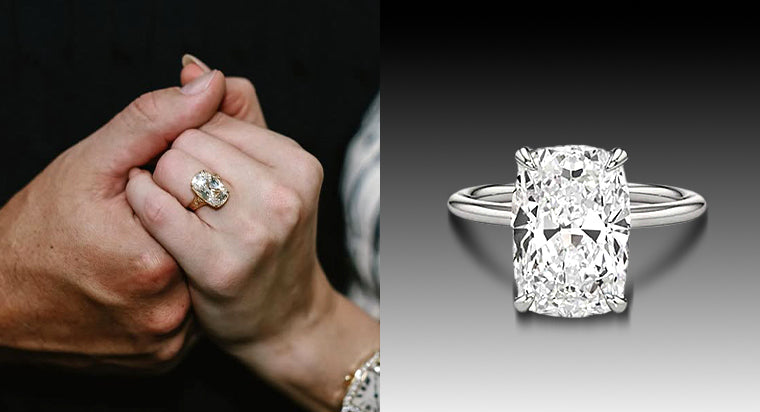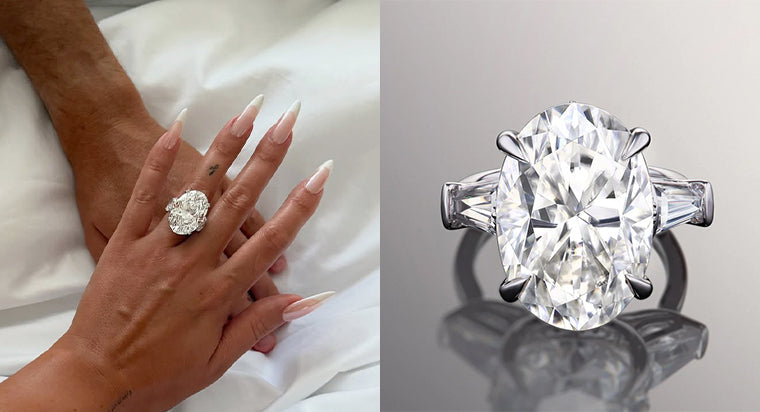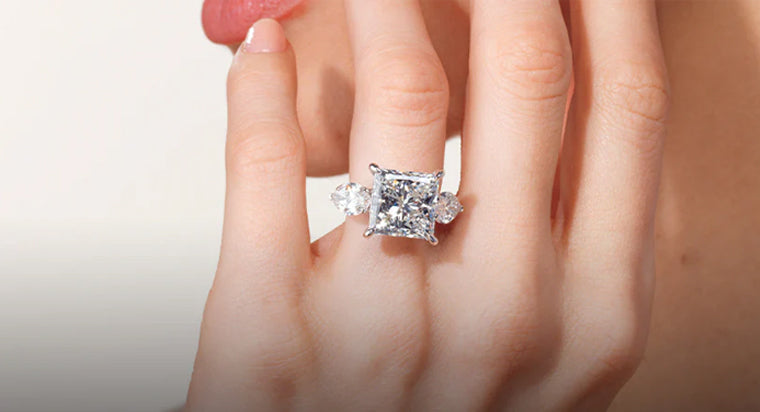How to Identify Your Diamond After A Repair


What Causes Diamonds to Need Repair?
Any mishandling of diamonds can lead to repair being needed. Also, if the diamond is mishandled while it was being cut and made, this can lead to abrasion. It also makes the diamond more susceptible to becoming abraded over the months and years. Therefore, when a diamond needs repair, it’s not always your fault. If a diamond was not cut by a professional jeweler or someone who knows what they are doing, that could be the culprit of your diamond problems.
The most common cause of a diamond chipping is when they are accidentally smacked on hard surfaces. These include things such as rocks in the garden or outside, granite counter tops, or any other random hard surfaces.
Some diamond repairs are for other reasons, such as customers wanting an inclusion close to the surface of the diamond removed. We do not recommend these types of repairs, as they aren’t entirely necessary and they can do more harm than good. Compared to the removal of scratches from the surface of the diamond, which can be done with no additional damage, removing inclusions can potentially require a complete redesign of the diamond. This is a major rework and you can lose a lot of the stone’s original value.
Repairing a Chipped Stone
Once a stone is damaged, it will never be exactly the same again. Also, it’s important to get chipped diamonds repaired immediately because once they get chipped once, they are much more prone to additional problems. The diamond’s internal structure has been weakened, so it needs to be fixed.
When a diamond gets chipped, you have two main options: exchanging your diamond or recutting it. We will go into detail of the two options so you have a better understanding of each.
Exchanging Your Diamond
This process involves exchanging your damaged diamond for a newer, undamaged one at a jewelry store. This does come with a price. Once a diamond gets a chip, it is considered as a flaw. This means that the clarity rating of the diamond will decrease. Once the clarity rating goes down, so does the stone’s value.
So, if you do happen to find a jeweler that wants to do the exchange, the stone that you will be given as a replacement will be one that is worth much less than what you originally paid for with your previous diamond. However, there is always the option of getting a higher quality stone for paying more money.
The jeweler benefits from the exchange because they can take the damaged stone, and cut it so that the chip is eliminated. Then, they will sell the newly formed diamond at a lower price, but they can still turn it into a new stone and make a profit off it.
Recutting Your Diamond
Recutting the diamond is a much more popular option than exchanging it. Recutting refers to the process where a jeweler creates a smaller diamond out of a bigger one. The diamond is cut again, with the chipped and damaged part being removed. The main downside of this is that the stone will weight less, so its carat weight will be lowered.
A lower carat weight equates to a lower overall diamond value. The value that you will lose depends entirely on how badly the stone was chipped or damaged. The larger the chip, the more of the diamond that the jeweler will need to cut, and vice versa.
Prevent Diamond Repairs
The best way to deal with a diamond repair is to prevent it from ever happening in the first place. The main way to do this is to take care of your diamonds, and if you know you are going to be in an area with harsh surfaces (such as rocks), simply leave your diamond ring or jewelry inside.
FAQs
Can you keep a ring engraving even if your ring is being repaired?
Yes, in most cases, you can keep your ring engraving during repairs. This will depend on the scope of work and whether the part where the engraving has been done needs to be modified. Otherwise, the jeweler can re-engrave the ring once the repair has been completed.
Are all diamonds laser inscribed?
No, not all diamonds are laser inscribed because some manufacturers choose not to opt for this paid service by the diamond certifying authority.
Where are diamonds laser inscribed?
Diamonds are usually laser inscribed on the girdle, which is the narrow band that separates the crown (the top part of the diamond above the girdle) from the pavilion (the lower part of the diamond below the girdle). The laser inscription is usually done in a microscopic font and is not visible to the naked eye. The laser inscription serves as a permanent identifier for the diamond and can include details such as the diamond's certificate number, carat weight, and the manufacturer's logo or brand name.
How often should you send your ring in from rhodium plating?
The frequency of rhodium plating for a ring depends on several factors, such as the type of metal the ring is made of, the wear and tear the ring experiences, and personal preferences. As a general guideline, white gold rings may need to be re-plated with rhodium every 12 to 18 months to maintain their bright, white appearance. However, if the ring is frequently exposed to lotions, soaps, or other chemicals, it may need to be re-plated more frequently. If the ring is made of platinum, it may not require rhodium plating as often, as platinum has a natural white color that does not change over time. It's best to consult a jewelry professional for personalized recommendations based on the specific characteristics of your ring.
How often should you send your ring in for prong tightening?
The frequency of having your ring's prongs tightened depends on various factors such as the type of ring, the frequency of wear, and the pressure the ring is exposed to. As a general rule of thumb, it's a good idea to have a professional check the tightness of your ring's prongs at least once a year, especially if you wear the ring frequently.









